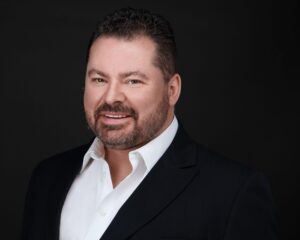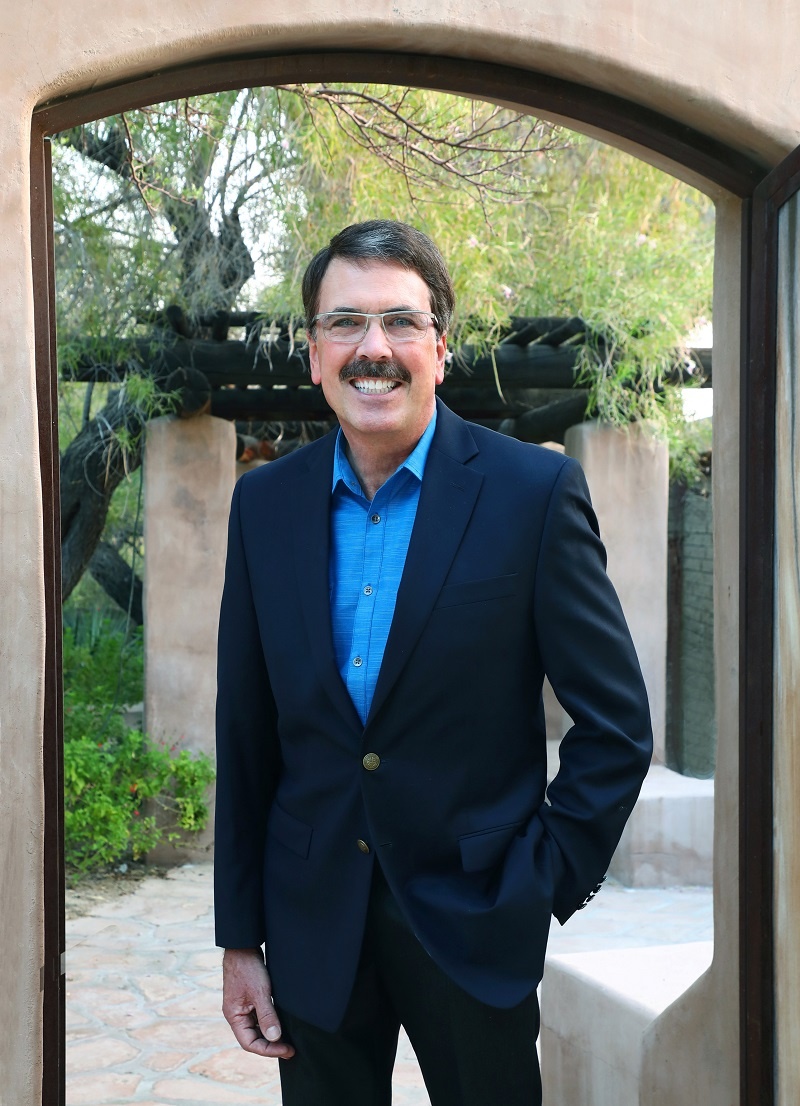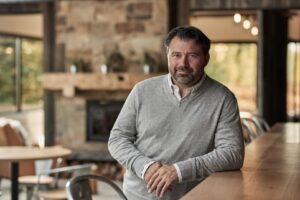“One aspect of public perception we have been working to correct is the anachronist view that zoos are just places with animals in cages,” explains Monroe.“The animals in our care are part of a global network of conservation organizations dedicated to preventing human-caused extinction. The Living Desert’s current conservation portfolio includes 35 projects in 10 countries working with 57 State, Federal, and International Partners.”
“When I first met Allen, he told me that one of his philosophies is, life is too short to do mediocre work and he is at The Living Desert Zoo and Gardens to build something great,” says RoxAnna Breitigan, Director of Animal Care. “These words support the vision that he has put in place here at The Living Desert. I am inspired to live up to this philosophy, to work alongside him while we build the Zoo of the Future, and make the world a better place.”
Leaders in Conservation
In support of capital expansion and strengthening their financial foundation, The Living Desert had been aggressively building an endowment over the last several years to join gate revenue and philanthropy as the third leg of their financial stool. Between shrewd investing, estate gifts, ardent donor support, and operational surplus, this endowment fund had annual growth of 30 percent for the last five years and now exceeds $50 million, making it one of the largest in the zoo community. “We use these funds to secure lines of credit. With today’s extremely low interest rates, it is an important part of our financial portfolio to manage cash flow issues that may develop,” says Monroe.
Zoos have a tremendous audience for those looking for ways to be good stewards of the Earth. In the U.S., almost 200 million people visit zoos and aquariums each year, which is more than all professional sports combined. “I look at a visit to the zoo as storytelling art where the animals are ambassadors for their species and
the staff and volunteers are the narrators of a simple parable. The dramatic changes the human population is causing to the Earth have long lasting and perhaps irreversible effects,” he explains. “We might not be able to see it from our sheltered perspective, so it is up to conservation organizations like The Living Desert to bring those lessons to the forefront and to make sure guests know that the current path our civilization is on is not sustainable.”
Monroe states that conservation in Africa has historically been about colonial forces telling other cultures how to manage their resources. This approach has not been successful, as evidenced by the shrinking natural areas and the increasing extinction rate. “At The Living Desert, we have implemented a different approach through community based conservation training workshops. Our work is focused on engaging local people as leaders and active participants in designing conservation projects of value to the community,” he explains. “These Social Science Training Workshops empower residents around sensitive areas to care, because it is linked to their needs. We recently completed training at the request of the Botswana Wildlife Training Institute which trains the rangers and researchers working in all the National Parks of Botswana.” In the last two years, they have trained over 400 conservationists from 24 countries to build community conservation success based on social sciences understanding.
Implementing Technology
Technology is a tricky issue for zoos. Focus groups tell us that guests see a trip to the zoo as a chance to get
away from the pervasive use of technology and decompress for a few hours. “This is also a generational issue, so we know that a strong WIFI signal and adequate bandwidth is important to our younger guests,” says Monroe. “Behind the scenes however, we are investing in technology that enables us to be a data driven non-profit organization. We use predictive analytics of weather and historical data to ensure staffing is at the right level. Customer Relations Management systems ensure that each guest has the right level of contact and information to get the most out of their visit. Bluetooth tracking beacons provide aggregate data on the path guests take in the Park with dwell times and help us devise strategies to prevent crowding.”
With more of their marketing and points of sale moving online, The Living Desert is taking full advantage of platforms like Google Analytics to measure their operational success. Online ticketing and time slot reservations allow them to control guest numbers and maintain COVID-19 restrictions.
Fighting the Pandemic
As a non-profit organization, The Living Desert relies on gate-generated revenue for 75% of its operating budget. “We knew we would have to quickly develop a plan for a prolonged government required shutdown to support limiting the pandemic. We have plans for expected emergencies such as fire, weather or injury and run both tabletop drill and field exercises, but a pandemic had not been on our radar,” explains Monroe. “After meeting with senior leadership, our plan quickly became clear with three priorities: stabilizing our financial position, transparent communications for staff and the public, and developing a COVID-19 response plan that would allow us to reopen.”
In any crisis, transparent and timely communication is essential to managing the situation. “When the Zoo shut down, we knew we would have to assure the general public that our commitment to providing excellent
care and welfare for our animals would not diminish,” explains Monroe. “Through printed editorials, social media and broadcast pieces, we shared that the animals were being cared for and how the public could help during this time by making a donation, renewing their membership, and supporting through our symbolic adoption programs.”
The Living Desert’s leaders, biologists, and veterinarians reached out to health care and public health professionals, and quickly developed a robust COVID-19 protection plan for Park operations to ensure the
guest, staff, and animals would be safe. They successfully lobbied County and State health officials to allow them to reopen and serve as a model to the community for the kind of precautions that all businesses would need to implement.
Building the Zoo of the Future
The role of zoos has transformed dramatically in the last several decades from being menageries for human entertainment to leaders in global conservation efforts. One must assume this rate of change will only increase in the future as pressures on the natural world increase due to human population growth and climate change. One cannot be passive about the future; The Living Desert is envisioning how the Zoo of the Future will operate and aim for that goal.
It will take many facets of the world-wide community to make positive change. Many businesses are already taking it upon themselves to support sustainable practices to help protect the natural world. Business owners and investors know that they can make sound decisions that support environmental efforts to lower emissions, protect vulnerable lands, and support a healthy planet.
In planning for the future, one of the first things Monroe did when joining the team at The Living Desert was to develop and put in place a Master Plan to guide future growth in support of their education and conservation mission. Years of disjointed projects had resulted in a jumble of guest experiences. Part of that Master Plan included a three-phase capital campaign of which they are in Phase Two. This project, Crossroads of Conservation, was designed to enhance guest experience, bring new species for visitors to learn and care about, and make a larger conservation impact.
“In Phase One, we invested in our infrastructure with new ticketing and admissions so that our “front door” begins the guest journey on the right track,” adds Monroe. “Despite the pandemic, we decided to continue forward with Phase Two and broke ground on a major animal habitat expansion project in July.” The new Rhino Savanna, to open in the Fall of 2021, will be a multi-species immersive experience for their guests, showcasing The Living Desert conservation efforts to protect the critically endangered black rhino. With fewer than 6,000 black rhinos left globally, their new rhino breeding facility will help build an insurance population to guard against extinction.
Despite the challenges of 2020, The Living Desert is charging forward to help save desert species, locally and around the world, and remains steadfast in their mission of desert conservation through preservation, education, and appreciation.


















